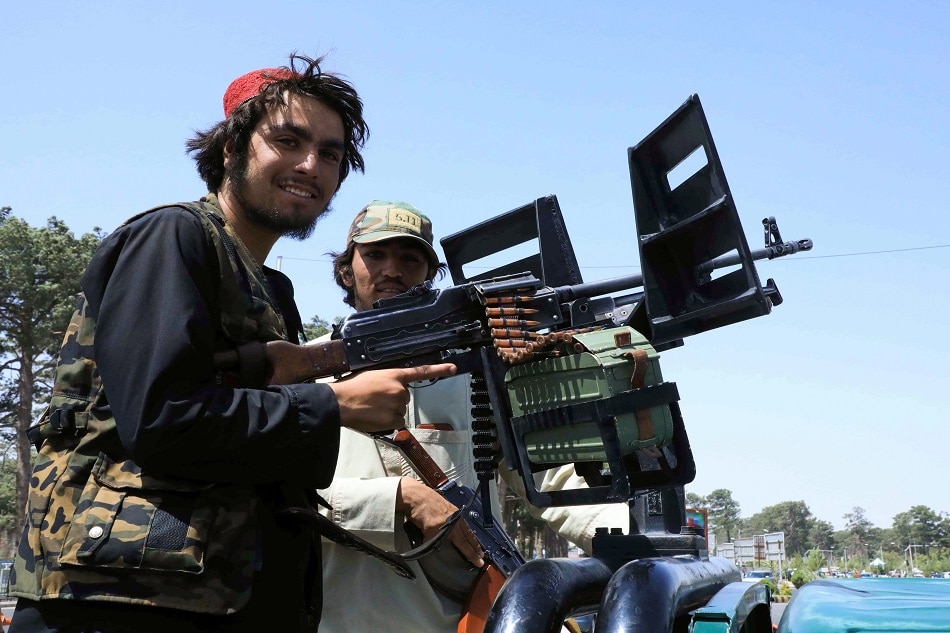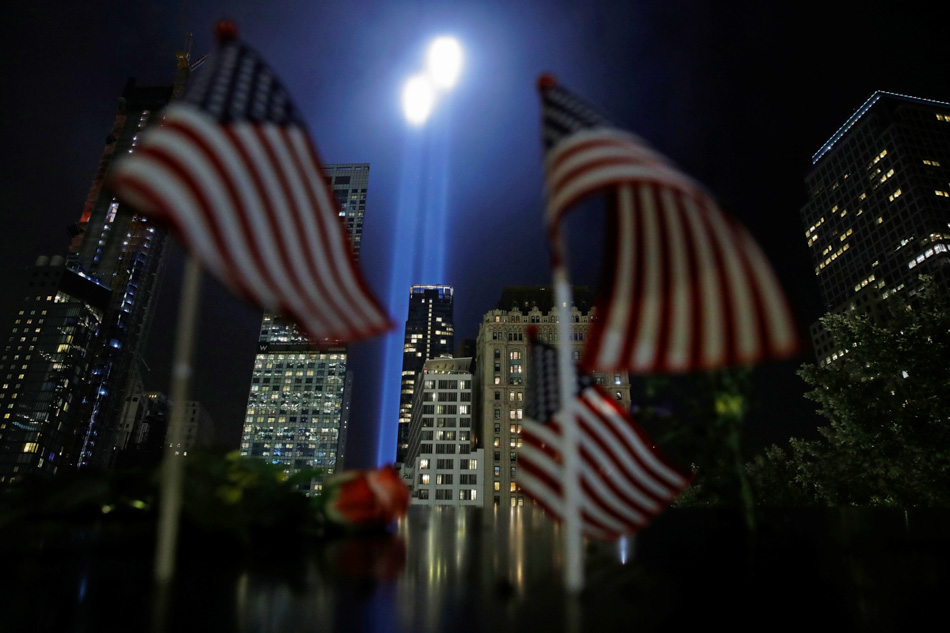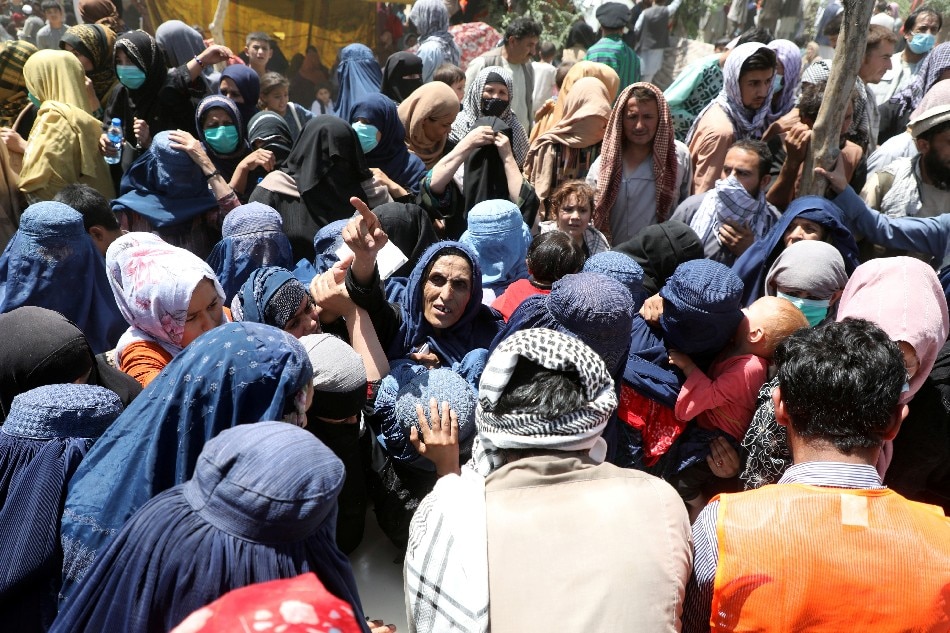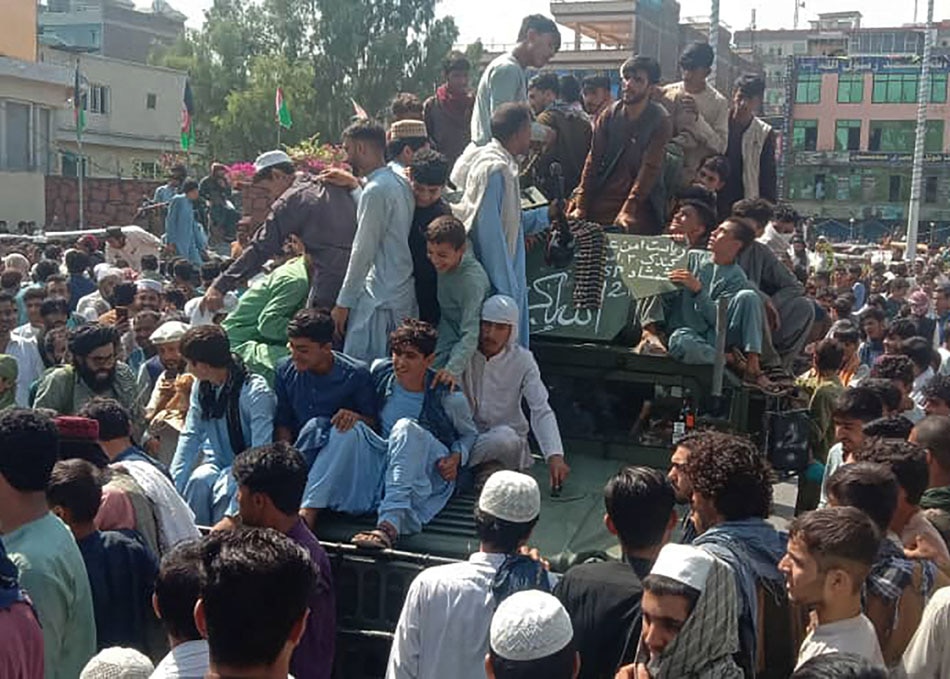The Afghanistan crisis: Key dates and events that led to the fall of Kabul | ABS-CBN

Welcome, Kapamilya! We use cookies to improve your browsing experience. Continuing to use this site means you agree to our use of cookies. Tell me more!
The Afghanistan crisis: Key dates and events that led to the fall of Kabul
The Afghanistan crisis: Key dates and events that led to the fall of Kabul
Agence France-Presse
Published Aug 16, 2021 12:13 PM PHT
With the Taliban back in control of Afghanistan, here is a recap of landmark events in the war-torn country since the group's first regime was toppled in the 2001 US-led invasion:
With the Taliban back in control of Afghanistan, here is a recap of landmark events in the war-torn country since the group's first regime was toppled in the 2001 US-led invasion:
- 2001: 9/11 and 'War on Terror' -
President George W. Bush launches his "war on terror" in response to the September 11 attacks that killed around 3,000 people, with air strikes on Afghanistan on October 7, 2001.
President George W. Bush launches his "war on terror" in response to the September 11 attacks that killed around 3,000 people, with air strikes on Afghanistan on October 7, 2001.
The Taliban government had sheltered Osama bin Laden and his Al-Qaeda movement, which masterminded 9/11.
The Taliban government had sheltered Osama bin Laden and his Al-Qaeda movement, which masterminded 9/11.
In power since 1996, the Taliban are soon defeated and flee the Afghan capital Kabul on December 6.
In power since 1996, the Taliban are soon defeated and flee the Afghan capital Kabul on December 6.
ADVERTISEMENT
Hamid Karzai is appointed to lead an interim government and NATO begins to deploy its International Security Assistance Force.
Hamid Karzai is appointed to lead an interim government and NATO begins to deploy its International Security Assistance Force.
- 2004: First presidential election -
Afghanistan's first election under a new system is held on October 9, 2004 with an enthusiastic turnout of 70 percent. Karzai wins 55 percent of the vote.
Afghanistan's first election under a new system is held on October 9, 2004 with an enthusiastic turnout of 70 percent. Karzai wins 55 percent of the vote.
The Taliban regroup in the south and east, as well as across the border in Pakistan, and launch an insurgency.
The Taliban regroup in the south and east, as well as across the border in Pakistan, and launch an insurgency.
- 2008-2011: US reinforcements -
As attacks multiply, the US command in 2008 asks for more troops and the first reinforcements are sent.
As attacks multiply, the US command in 2008 asks for more troops and the first reinforcements are sent.
Karzai is re-elected on August 20, 2009 in elections that are marred by massive fraud, low turnout and Taliban attacks.
Karzai is re-elected on August 20, 2009 in elections that are marred by massive fraud, low turnout and Taliban attacks.
In 2009, President Barack Obama, who had campaigned on a pledge to end the Afghanistan war, doubles the number of US troops to 68,000. In 2010, it reaches around 100,000.
In 2009, President Barack Obama, who had campaigned on a pledge to end the Afghanistan war, doubles the number of US troops to 68,000. In 2010, it reaches around 100,000.
Osama bin Laden is killed on May 2, 2011 in a US special forces operation in Pakistan.
Osama bin Laden is killed on May 2, 2011 in a US special forces operation in Pakistan.
On June 22, Obama announces the beginning of a troop withdrawal, with the departure by mid-2012 of 33,000 soldiers.
On June 22, Obama announces the beginning of a troop withdrawal, with the departure by mid-2012 of 33,000 soldiers.
- 2014: NATO exit -
In June 2014, Ashraf Ghani is elected president but voting is marred by violence and a bitter dispute over claims of fraud.
In June 2014, Ashraf Ghani is elected president but voting is marred by violence and a bitter dispute over claims of fraud.
In December, NATO ends its 13-year combat mission but a number of troops remain to train the Afghan military.
In December, NATO ends its 13-year combat mission but a number of troops remain to train the Afghan military.
The following year, the Taliban make their greatest military advances since being ousted.
The following year, the Taliban make their greatest military advances since being ousted.
The Islamic State jihadist group also becomes active in the region. Bloody attacks multiply, notably in Kabul.
The Islamic State jihadist group also becomes active in the region. Bloody attacks multiply, notably in Kabul.
- 2020: US-Taliban deal, disputed election -
Ghani is declared victorious for a second term on February 18, 2020, an announcement rejected by his rival and former minister Abdullah Abdullah, who vows to form his own parallel government.
Ghani is declared victorious for a second term on February 18, 2020, an announcement rejected by his rival and former minister Abdullah Abdullah, who vows to form his own parallel government.
On February 29, the United States and the Taliban sign a historic deal in Doha under which all foreign forces would leave Afghanistan by May 2021, provided the insurgents start talks with Kabul and adhere to other security guarantees.
On February 29, the United States and the Taliban sign a historic deal in Doha under which all foreign forces would leave Afghanistan by May 2021, provided the insurgents start talks with Kabul and adhere to other security guarantees.
A power-sharing deal ends the bitter Ghani-Abdullah feud in May. Abdullah takes the role of leading the peace negotiations.
A power-sharing deal ends the bitter Ghani-Abdullah feud in May. Abdullah takes the role of leading the peace negotiations.
Talks begin in September but violence surges and the Taliban are blamed for a wave of targeted killings.
Talks begin in September but violence surges and the Taliban are blamed for a wave of targeted killings.
- May 2021: Foreign troops withdrawal -
On May 1, 2021 the United States and NATO start withdrawing their 9,500 soldiers, of which 2,500 are American.
On May 1, 2021 the United States and NATO start withdrawing their 9,500 soldiers, of which 2,500 are American.
In May, the Americans withdraw from the Kandahar air base.
In May, the Americans withdraw from the Kandahar air base.
On July 2, Bagram air base -- Afghanistan's biggest, and the nerve centre of the US-led coalition's operations -- is handed over to Afghan forces.
On July 2, Bagram air base -- Afghanistan's biggest, and the nerve centre of the US-led coalition's operations -- is handed over to Afghan forces.
President Joe Biden says that the US troop withdrawal will be completed by August 31, before the 20th anniversary of the 9/11 attacks.
President Joe Biden says that the US troop withdrawal will be completed by August 31, before the 20th anniversary of the 9/11 attacks.
- May-August 2021: Taliban blitz -
The insurgents launch lightning attacks across Afghanistan, capturing vast stretches of the hinterland as the final foreign troops begin their withdrawal.
The insurgents launch lightning attacks across Afghanistan, capturing vast stretches of the hinterland as the final foreign troops begin their withdrawal.
The Taliban capture their first provincial capital, Zaranj in the southwest, on August 6.
The Taliban capture their first provincial capital, Zaranj in the southwest, on August 6.
Other major cities fall within days, including Kandahar and Herat -- Afghanistan's second- and third-biggest cities respectively.
Other major cities fall within days, including Kandahar and Herat -- Afghanistan's second- and third-biggest cities respectively.
Most of the north, west and south is under Taliban control by August 13.
Most of the north, west and south is under Taliban control by August 13.
The Pentagon says Kabul does not appear to face an "imminent threat".
The Pentagon says Kabul does not appear to face an "imminent threat".
- August 2021: Fall of Kabul -
The insurgents fully encircle the capital on August 15 with the capture of Jalalabad in the east.
The insurgents fully encircle the capital on August 15 with the capture of Jalalabad in the east.
It leaves Kabul as the only city under government control.
It leaves Kabul as the only city under government control.
Diplomatic missions scramble to evacuate officials and local staff who fear reprisals from the Taliban.
Diplomatic missions scramble to evacuate officials and local staff who fear reprisals from the Taliban.
Ghani flees the country, reportedly to Tajikistan, and the Taliban enter Kabul, eventually taking position in the presidential palace.
Ghani flees the country, reportedly to Tajikistan, and the Taliban enter Kabul, eventually taking position in the presidential palace.
In a statement, Ghani admits the insurgents have "won."
In a statement, Ghani admits the insurgents have "won."
The ease of the Taliban's advance, despite billions of dollars spent by the United States and others to build up local Afghan government forces, has stunned the world.
The ease of the Taliban's advance, despite billions of dollars spent by the United States and others to build up local Afghan government forces, has stunned the world.
Just last week, a US intelligence estimate said Kabul could hold out for at least three months.
Just last week, a US intelligence estimate said Kabul could hold out for at least three months.
Before news that Ghani had left Kabul, a palace official said he was in emergency talks with US peace envoy Zalmay Khalilzad and officials from the NATO transatlantic alliance.
Before news that Ghani had left Kabul, a palace official said he was in emergency talks with US peace envoy Zalmay Khalilzad and officials from the NATO transatlantic alliance.
Power would be handed over to a transitional administration, the government's acting interior minister, Abdul Sattar Mirzakawal, tweeted on the Tolo news channel. "There won't be an attack on the city, it is agreed that there will be a peaceful handover," he said without elaborating.
Power would be handed over to a transitional administration, the government's acting interior minister, Abdul Sattar Mirzakawal, tweeted on the Tolo news channel. "There won't be an attack on the city, it is agreed that there will be a peaceful handover," he said without elaborating.
A tweet from the Afghan presidential palace account said firing had been heard at a number of points around Kabul but that security forces, in coordination with international partners, had control of the city.
A tweet from the Afghan presidential palace account said firing had been heard at a number of points around Kabul but that security forces, in coordination with international partners, had control of the city.
Many of Kabul's streets were choked by cars and people either trying to rush home or reach the airport, residents said.
Many of Kabul's streets were choked by cars and people either trying to rush home or reach the airport, residents said.
- With reports from Reuters
ADVERTISEMENT
ADVERTISEMENT





